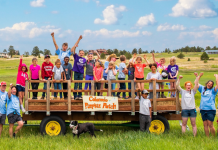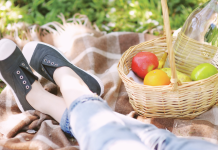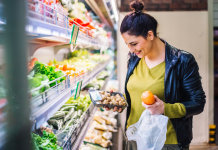I decided to quit the supermarket and felt inspired. Then I googled “Colorado Springs farms” and found almost nothing. A few different google searches, still nothing. So I learned to approach this the old-fashioned way: via people. I felt like an outsider at first, but quickly realized I was just as welcome as anyone else because when it comes to local food, we’re all invited.
Buying food locally looks different from buying in the store, so I’ve written this post to help you make the jump a little easier.
Where to Start
Farmers markets are a great place to start. Until you’ve found your trusted farmer, ask questions. Just because a person has a market booth doesn’t make them a farmer. Find out if they grew the food they’re selling, where their farm is, and their farming philosophy (ideally you want no pesticides, good soil care, pasture-raised animals). It also helps if you like them. I met most of my food producers at farmers markets and now contact them directly when I need something.
Think through your social networks. Know anyone who’s a little crunchy? Ask them to connect you to their local sources, and soon you’ll have a nice little network of your own.
Facebook is also a good source. Many farms don’t have good websites, but they may have a Facebook page where they post information. The local Weston A. Price chapter FB group maintains a list of local farms and an active community of local food people.
How to Afford It
Cost is the biggest objection to buying locally. The reality is, there is a way to do it that will work for your budget. If you’re willing to get creative and maybe get your hands dirty, you can do it.
First, I’d suggest buying in bulk. We buy our meat once or twice a year and fill the freezer in our garage. Per pound, it’s grocery store prices for remarkably greater quality meat. Buying a whole animal gets you the best price, so if you don’t need that much meat, but can recruit enough people to split it with you, you can get the amount you need at the best price. With the whole animal you also get the organs, bones (for broth), and fat that can be rendered and used for cooking fat.
We also bought fruit and vegetables in bulk during the summer and preserved them.
Second, some local farmers are willing to exchange food for volunteer hours. Others have donation programs or accept SNAP benefits.
Third, grow and make your own. The most affordable food comes from your own yard, your own kitchen, made with your own two hands. I’m hoping to start a small vegetable garden this year, and raise chickens next year. Friends have given me a SCOBY for kombucha, kefir grains for kefir, and sourdough starter for bread. The cost is often in the time it takes to learn how to make these things. That may be a huge leap from where you are today, but if it interests you, know you will ease into it over time.
The Logistics
Here’s the inconvenient news for moms: There is no one-stop shop for local food.
I know. It’s less convenient than the supermarket, and there’s no way around it. But small changes in mindset and values go a long way in what we’re willing — and even happy — to do. Here’s the better news: some farmers deliver to your door! And if they don’t deliver, many offer an in-town pickup spot.
I pick up milk and bread together on Saturday, and veggies on Friday. In the summer, we go to our favorite farmers market once a week, or twice if we can’t resist. I meet my beekeeper in a nearby parking lot every few months and pay him in cash for honey. And four or five times a year, I make the 20-minute drive all the way to Twisted Pines Farm in Black Forest, where I get some eggs and all my meat.
We live in Colorado, so I can’t buy all my food from local producers, but I do the best I can. When I can’t buy directly from farmers, I shop at smaller grocers like Mountain Mama or Natural Grocers.
Start Small
Before you start thinking I don’t understand mom life, that convenience is how we survive, I need to say that’s exactly why local food has such an appeal to me. I craved simplicity, beauty, curiosity and understanding in my kitchen. I wanted to know more about my food. I was tired of some anonymous person deciding what my family should eat and putting it in a flashy package that I could warm up on my stove. I craved meaningful connection with people, and the supermarket simply couldn’t offer that.
This discussion is, at its heart, a discussion on values.
Making these changes can quickly lead to overwhelm. We see how much we may want to change, and each change requires thought and planning. But just start with one thing. Choose one thing to buy locally and see how it goes. Promise yourself to only take on what you can handle at one time, knowing the rest is there, patiently waiting until you’re ready.
This is the second part in a three-part series. Read the other two pieces here: Why I Quit the Supermarket and A Local Food Guide: Colorado Springs Favorites.














